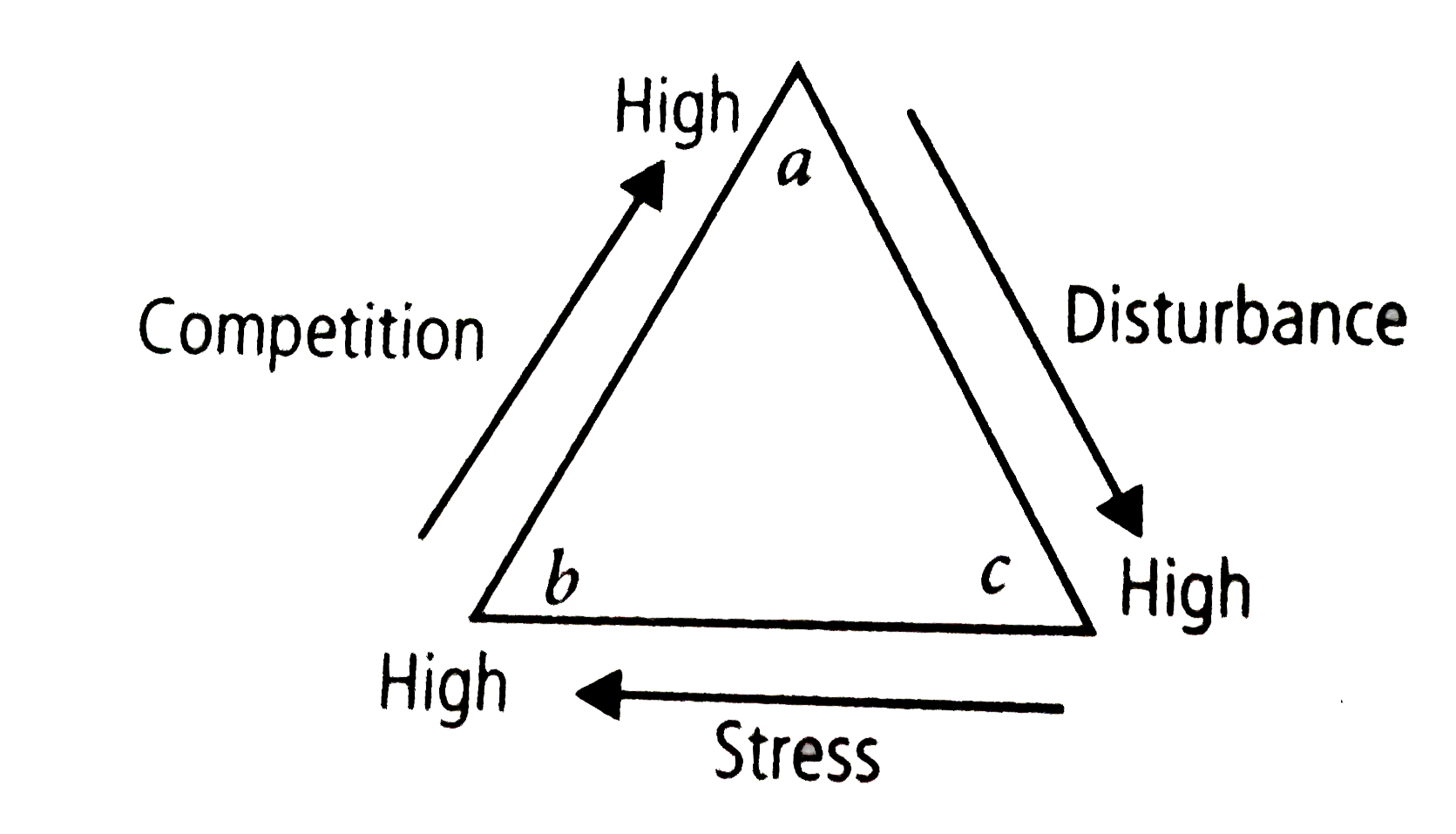The figure below depicts life-histroy strategies for three plant species (a,b and c) along 3 axes : strength of competition with other organisms, level of distrubance in the habitat, and level of environmental stress in the habitat. Species a grows in habitats where competition among species b grown in habitats with and stress are low. Species b grows in habitats with high environmental stress but with low interspecies competition. Species c grows in highly disturbed habitats with low enviornmental stress.
 Which of the statements below is/are correct ?
Which of the statements below is/are correct ?
I. Characteristics of "a-type" plants are faster growth rate and short-lived leaves.
II. Desert annual plants are "b-type" species. they have rapid growth and produce large amount of seeds in a short time after rains.
III. Most plants belonging to "c-type" species would be herbaceous while "a-type" and "b-types" species are likely to be trees or shrubs.
A
Only II
B
I and II
C
I and III
D
II and III
Video Solution
Text Solution
The correct Answer is:D
A life history classification system for plants is based on the premise that there are two basic factors-stress and disturbance -that limit the amount of biomass a plant can produce in a given environment. Stress occurs through external conditions such as shading, drought, nutrient deficiency or low temperature that limit production. Disturbance occurs when there is parial or total disruption of plant biomass due to natural events or human activities. Now 'a-type' plants are competitors which live under conditions of low stress and low disturbance and have good competitive ability at high population densities near the carrying capacity. Such plants have slow growth rate and prevail in non-seasonal tropics where there is low probability of severe environmental changes. 'b-type' plants grow under high stress as in deserts and they produce large amount of seeds after rains to maximise their chances of perpetuation. 'c-type' plants grow under high disturbance and low stress hence they could be herbaceous plants.
|
Topper's Solved these Questions
Similar Questions
Knowledge Check
Species richness in any habitat is related to
Agenetic diversityBspecies diversityCecosystem diversityDNone of thesePlants growing in dry habitat are
ALithophytesBMesophytesCHydrophytesDXerophytes.Organisms that fix nitrogen in aquatic habitats are
Agreen algaeBcyanobacteriaCbrown algaeDprotozoa
The level of competition between species depends on
View SolutionSpecies that are most effective at colonising new habitats show
View SolutionPlants growing in moist habitat are known as
View SolutionEcologists say that a niche is like a species , while habitat is like its
View SolutionEnvironmental factor (s) that characterize the habitat of ecosystem is /are
View Solution